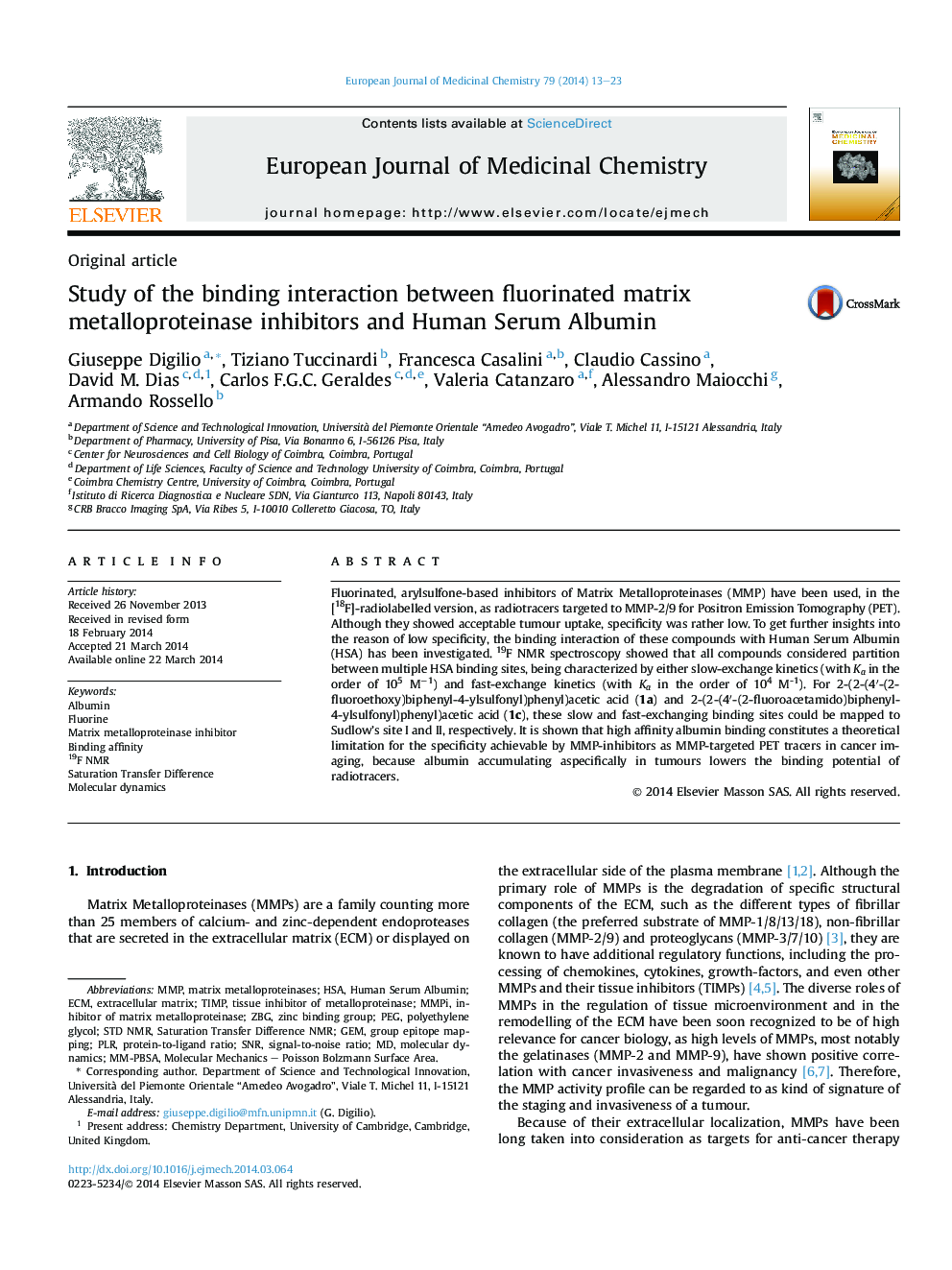| Article ID | Journal | Published Year | Pages | File Type |
|---|---|---|---|---|
| 1397299 | European Journal of Medicinal Chemistry | 2014 | 11 Pages |
•MMP-targeted PET tracers based on fluorinated arylsulfones strongly bind to albumin.•Specific and aspecific binding sites are available, with Ka up to ∼105 M−1.•High affinity for albumin poses a serious limitation for the specificity of MMP detection.•Ligand binding epitopes have been defined by NMR and computational modelling.
Fluorinated, arylsulfone-based inhibitors of Matrix Metalloproteinases (MMP) have been used, in the [18F]-radiolabelled version, as radiotracers targeted to MMP-2/9 for Positron Emission Tomography (PET). Although they showed acceptable tumour uptake, specificity was rather low. To get further insights into the reason of low specificity, the binding interaction of these compounds with Human Serum Albumin (HSA) has been investigated. 19F NMR spectroscopy showed that all compounds considered partition between multiple HSA binding sites, being characterized by either slow-exchange kinetics (with Ka in the order of 105 M−1) and fast-exchange kinetics (with Ka in the order of 104 M-1). For 2-(2-(4′-(2-fluoroethoxy)biphenyl-4-ylsulfonyl)phenyl)acetic acid (1a) and 2-(2-(4′-(2-fluoroacetamido)biphenyl-4-ylsulfonyl)phenyl)acetic acid (1c), these slow and fast-exchanging binding sites could be mapped to Sudlow's site I and II, respectively. It is shown that high affinity albumin binding constitutes a theoretical limitation for the specificity achievable by MMP-inhibitors as MMP-targeted PET tracers in cancer imaging, because albumin accumulating aspecifically in tumours lowers the binding potential of radiotracers.
Graphical abstractFigure optionsDownload full-size imageDownload as PowerPoint slide
